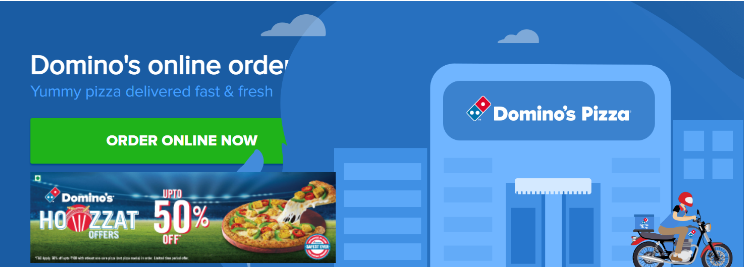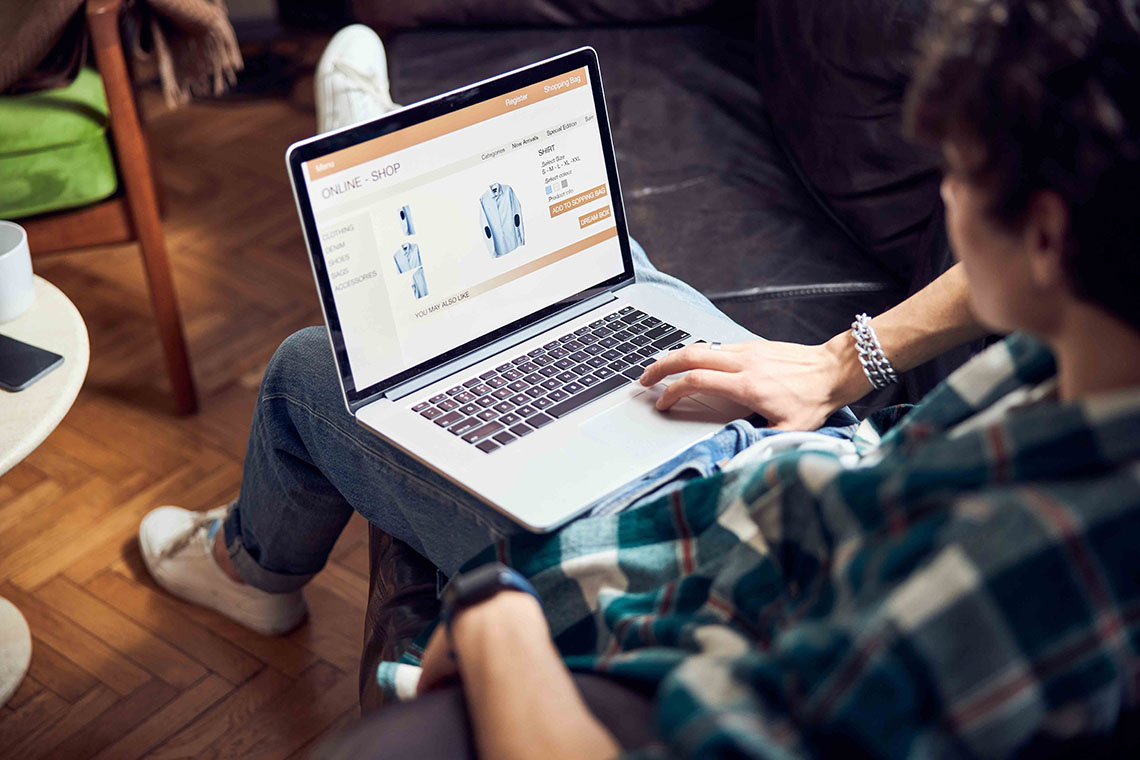Say there is only one piece left of the bootcut jeans you have been eyeing for quite some time. You will probably decide faster than you would if there were ten similar options in the same price range.
Most of our decisions are subconscious, and that’s what consumer psychology is all about—what will drive customers toward a purchase. If you want to provide your customers with a once-in-a-lifetime kind of experience, then we are here to help.
Let’s see how consumer psychology is used in UX, along with examples from brands doing it right.
What Is Consumer Psychology?
Consumer psychology seeks to understand why customers buy certain products over others. If you show someone ten options, why do they pick three and ignore the rest? This decision is influenced by both internal psychological factors and outside influences that persuade us.
Similarly, think about how people decide between different brands. What makes them prefer one product over another? And how do friends, family, coworkers, or even strangers impact their choices?
These decisions happen all the time, often without us realizing it. Consumer psychology is always at work, even if we don’t notice it. Most of our buying choices are made without us thinking about them.
In fact, according to Gerald Zaltman, Harvard professor and author of the book, “How Customers Think: Essential Insights Into the Mind of the Market,” 95% of buying decisions are subconscious. Therefore, to create memorable customer experiences, we need to understand these subconscious processes.
Why Is Consumer Psychology Important for UX?

Consumer psychology can help us dive into customers’ minds, understand what drives them to action, and create memorable experiences they never forget.
- Connecting with users
Consumer psychology helps UX designers understand what motivates customers to buy a product, why they prefer certain products, and what makes them click. Understanding these aspects can help them create interfaces and experiences that connect with users on a psychological level. If it clicks, they will make the buying decision quicker.
- Tapping the emotional side
What makes your customers feel joy, trust, or satisfaction? Consumer psychology focuses on all instances that can trigger those emotions and significantly increase customer engagement. For example, consumer psychology studies show that visually appealing content can evoke positive emotions. When designing a website or app, you can focus more on the visual aspects to make a positive first impression.
- Predicting customer behavior
While it’s all fun and games to guess how customers behave, your guesses might not always be on point. Consumer psychology can help here by predicting behavior more accurately and helps in designing interfaces that guide users naturally through the product or service.
If you are designing a fitness app, for example, you can use consumer psychology to understand why certain people give up their workout routines in between. Based on that, you can inculcate features or motivational factors that keep them going.
- Communicating effectively
Consumer psychology will help you understand the language, visual cues, and messaging that aligns with user expectations. Your communication instantly improves when you are aware of things they connect with. For instance, a website that gives personalized recommendations on top based on browsing history or purchase behavior.
- Builds trust and credibility
What is the first thing that comes to mind when considering using an online banking app? When financial details are involved, security becomes paramount.
That’s where an app that remains transparent in explaining its encryption protocols, two-factor authentications, and regular security audits can calm you down. Consumer psychology helps you tap into all areas where doubts might occur to ensure you design interfaces that build trust among your audience.
How Consumer Psychology Shapes UX

Consumer psychology shapes UX in many ways, such as reducing cognitive load, simplifying decision-making, prioritizing visual elements, and better connecting with users. Here are some ways you can put these into practice with relevant consumer psychology examples.
Cognitive Load
Cognitive load refers to the mental effort required to process information and make decisions. UX designers must ensure that this effort remains minimal by:
- Keeping user interfaces simple and easy-to-understand
- Not giving too many choices and driving customers away
- Organizing content in a manner that flows and connects with customers easily
Craigslist is an excellent example of a non-responsive website design with too much information flooding at once.

Miller’s law also justifies the importance of keeping the cognitive load minimal. According to this law, an average human can simultaneously hold about seven items in their working memory. Bombarding them with too much information will only lead to inaction.
Decision Paralysis
Has it ever happened to you that you searched for something, and too many similar options came in front of you? You realize it’s challenging to make a choice. Either you procrastinate, or you don’t make a decision at all and leave it. That’s what decision paralysis is.
If your users are bombarded with options when they come across a website or an app, their decision-making powers will fall short. That’s where you, as a UX designer, need to provide two things:
- Less and meaningful choices
- Techniques like progressive disclosure, where advanced features or information is only provided when requested upon
With these two techniques, you will make their lives much easier and make decisions faster.
Visual Hierarchy
When users stumble upon a website or app, they want to see the most important information first. Now, what they consider essential will differ from user to user. However, you can still figure out a visual hierarchy that prioritizes what is considered important generally.
Why do some brands pop up in their running sales as soon as you enter their website? For instance, Amazon knows that as summer arises, customers are looking for summer appliances. The moment you enter their website, here’s what you see:

Then, they slowly move to other products with a great discount running on them. They know how people cannot resist shopping in sight of a good discount. That being said, you need to put the most crucial information right in front of users based on what they are looking for.
Fitts’ Law
Fitt’s law is a crucial UX design principle that describes the relationship between the size of a target, its distance from the user, and the time required for selection. Here’s what it states:
- Larger targets are easier to notice and select
- Closer targets are faster to reach
- The time needed to move and choose depends on the size and distance
While creating websites, CTA buttons are often kept larger and more accessible. Similarly, navigation menus are made in a way that first displays the most prominent information. Moreover, web and mobile interface scroll bars are often bigger to ensure more effortless scrolling.
Here’s an example of how Domino’s distinguishes its CTA button, “order online now,” to ensure it catches attention and drives action. And let’s be fair; we can’t help but notice the “upto 50% off” discount- that’s fitt’s law in action!
That’s just one of the many UX laws and principles that can help you enhance your user experience. If you want to explore others, check out our list here.
Zeigarnik Effect
Have you ever felt that little voice in your head reminding you about the tasks you left incomplete? Even if you procrastinate, you feel the need to complete those pending tasks.
That’s the Zeigarnik effect in consumer psychology, which focuses on people’s tendency to dwell on incomplete tasks more than completed tasks. Some of its key aspects are:
- Unfinished tasks remain in our memory longer than finished tasks
- The intrusive thoughts about unfinished tasks lead to discomfort
- Unfinished tasks lead to a motivational drive to seek closure and achieve completion.
These three parameters of consumer psychology can greatly benefit UX designers. When working on checkout flow or user onboarding, use visual progress indicators. Show your customers how much they have done and what’s remaining. The need for closure will ensure they don’t abandon you in the middle.

Similarly, gamification can be used while designing apps. Use game elements where users opt for challenges that remain partially incorrect. They are then motivated to return to the experience to finish what they started.
Social Proof
Quick question: Which restaurant would you rather pick, one with two reviews or 100+ reviews and a 4.5 rating?
Most people will go with the one with better ratings and reviews. The answer is simple- when in doubt, we tend to look at the actions and behaviors of others. Social proof is a crucial factor in UX as well.
Showcasing testimonials, reviews, and ratings from other people and reputable sources reassure customers about the quality of products or services. It reduces decision-making anxiety as they see others have had positive experiences or outcomes.
Personalization
Customers are more likely to respond or take action when they feel you are talking directly to them. Personalization is a technique that helps engage customers by creating relevant content and customizing interactions as per their unique needs and interests.
For instance, if a customer opens an eCommerce website or app, personalized recommendations would persuade him to take action. As a UX designer, you must ensure the proper placement of these recommendations.
And the best part about personalization? It’s not limited to one industry or sector. Everyone is doing it, including brands in fashion, entertainment, etc. Here’s a great example from Netflix:
Personalizing users’ experiences helps to also reduce their cognitive load and leads to quicker actions. A win-win for both, right?
Consumer Psychologist Responsibilities
Let’s now understand some common consumer psychologist responsibilities better.
Market Research
Consumer psychologists conduct market research to understand consumer behaviors, trends, and preferences within specific markets and create user scenarios. They thoroughly analyze data related to consumer attitudes, purchasing patterns, and decision-making processes. Using this data, you can better connect with your audience.
Brand Strategy
Consumer psychologists use their understanding of consumer psychology to help businesses create brands that resonate with their target audience. Insights on specific behaviors and trigger points help them differentiate their products/services in competitive markets.
User Persona Creation
Communicating with your target audience requires a detailed understanding of their psychological and behavioral factors. Consumer psychologists create user personas that identify critical demographic and psychographic traits, motivations, needs, and preferences of different customer segments to enhance experiences.
User Testing
When you create a product, a digital interface, or a service, you need to know how customers respond to it. Consumer psychologists design and conduct user testing studies to analyze consumer responses. They gather insights into consumer perceptions, satisfaction levels, and usability issues through experiments, surveys, and observations to ensure timely changes.
They often work with online user testing tools like UXtweak to conduct usability testing and user research. You can see those tools and methods in action in our handy demos! 👇
Consumer Advocacy
Consumer psychologists advocate for consumer interests by advising businesses on ethical practices, transparency, and customer satisfaction. They may also contribute to public policy discussions on consumer protection and rights based on their understanding of consumer behavior and decision-making.
What’s next?
Now that you know how consumer psychology can help shape user experience, let’s combine this with the right tools to get results. For example, if you want to reduce the cognitive load, you don’t have to spend hours figuring out how to improve your site’s content.
In this case a card sorting tool will help you understand what users think about your site’s content and design intuitive navigation menus that users can quickly grasp and work through. If your homepage’s bounce rate is at an all-time high, you can also use a tree testing tool. It will help ensure that finding information on your website is the easiest thing to do.
When dealing with decision paralysis, a preference testing tool can help you understand which designs smooth out the decision-making process. You can use it to ask participants what they prefer over others.
These are some of the many tools UXtweak offers that can help you better understand your consumer psychology. Want to know more?
Register for your free account and try it out yourself! ⬇️










